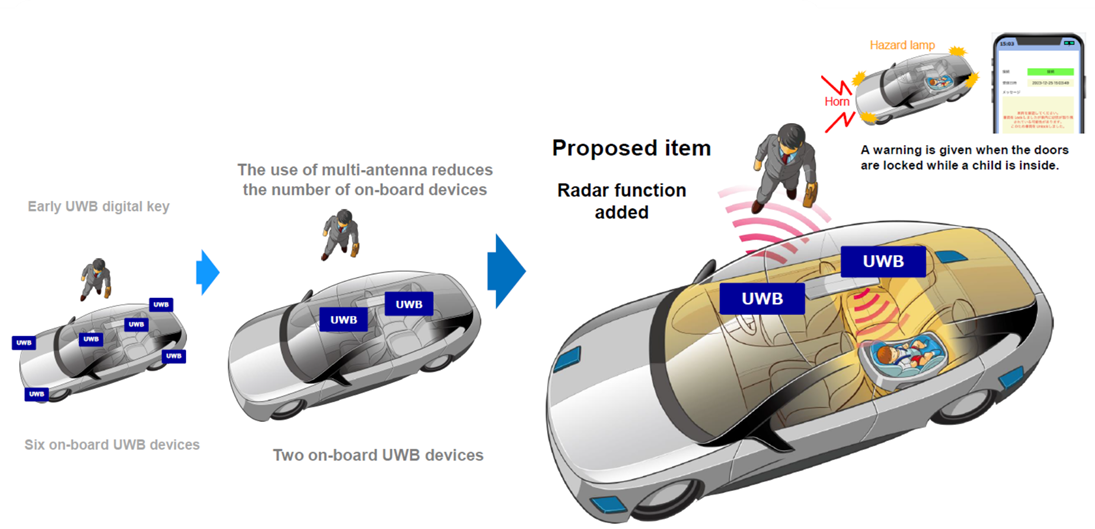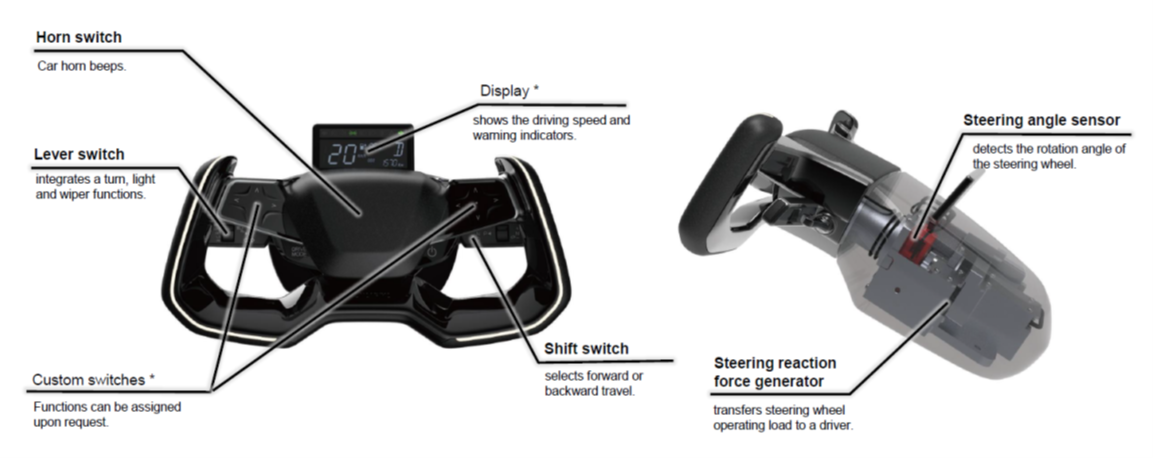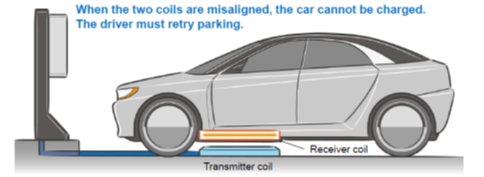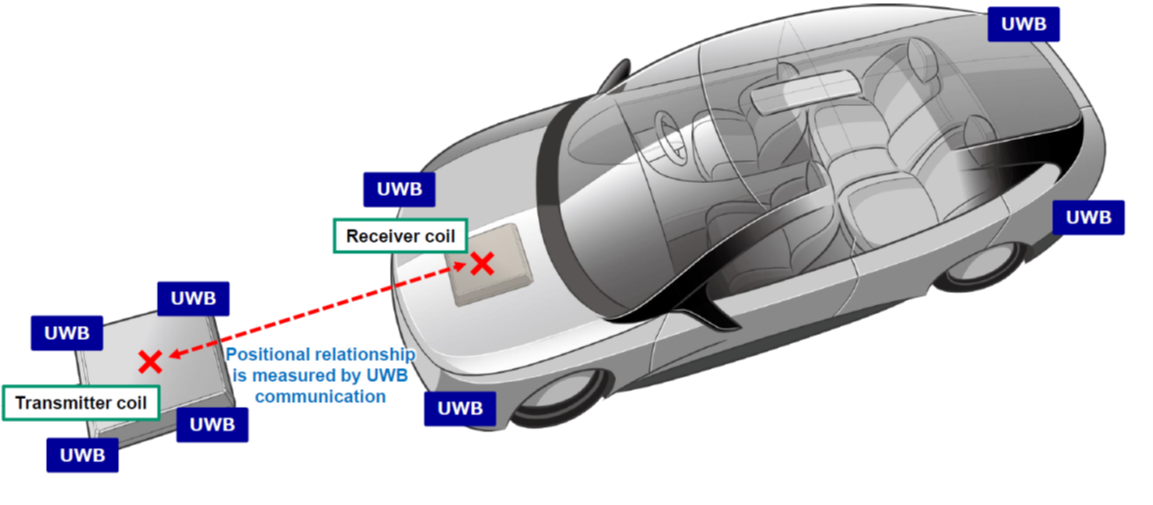Tokai-Rika In-Vehicle Technology Application Innovations
The “intelligent cockpit” provides a cockpit that is connected to society with improved safety, comfort, and convenience through a UI that makes multimodal proposals to the car based on its perception of people’s feelings and steering wheel switches that allow intuitive access to in car and out of car services while driving the vehicle. In addition, we will offer an interior that takes advantage of the features of transparent decorative panels that combine design and operability with environmentally friendly and sustainable materials.
The ambient lighting mounted on the exterior of a car senses a person with the car key approaching and focuses the light in the direction to greet the person. A car’s advanced key system delivers the keys directly to your smartphone, eliminating the need for physical keys and the hassle of handovers.
Seat belts are not just for comfort; they are designed to protect you during a collision. Working in tandem with the vehicle system, the seat belt system provides a physical notification to the driver by retracting the shoulder belt. This happens when the autonomous driving mode is changed to manual or when it detects signs of driver fatigue. The lap belt and shoulder belt are separated at the tongue by the lap belt retractor embedded in the seat, allowing each belt tension to be separately controlled in the event of a crash, reducing the risk of chest injuries.
The side view cameras are designed to ensure comprehensive, direct front visibility. The embedded dew/frost heaters provide good rear and side view images to assist safe driving. Visibility information necessary for driving is collected on the monitor in front of the driver’s seat, reducing the need to change the direction of the eyes for safe driving.
The telescopic center display can be tilted and panned, improving operability and visibility according to the scene.
Our car’s movable center console is a testament to adaptability. It ensures ample space for occupants getting in and out of the vehicle and for walk-through between front and rear. When retracted, it functions as a center cluster with satisfactory utility, enhancing the interior space of a parked car. This feature allows you to customize the interior space to fit your needs, making every journey comfortable and convenient.
The HMI controller allows the interior space to fit the individual’s taste and mood and offers switch design and layout options. The optical sensor mounted overhead senses hand motions to automatically turn on the spot lamps and control the center display’s movement.
The smart steering wheel controls internal functions and external devices and contents. The switches also offer animation effects and are customizable to the frequency of use. Functions can be added and updated later. The switches are multifunctional but clear because individual functions are displayed only when needed. A driver can intuitively control the device by flicking and swiping like a smartphone. The space-saving capacitive touchscreen carries the device’s multifunctionality.
The steering wheel controls include a shift-by-wire shifter to propose the best gearshift position according to the situation, enabling smooth gearshift change. The electrocardiogram sensor embedded in the steering wheel garnish anticipates the driver’s emotions or drowsiness during driving to take appropriate responses. The installed grip sensor and lighting system work together to show autonomous driving mode, and when the driving mode is changed to manual, the driver is requested to hold the wheel firmly.
The instrument panel and door trim contain a special surface-treated decorative panel that transilluminates switch symbols regardless of panel color and pattern. A combination of user-friendly functionality and stylish decoration gives the interior space an innovative feel.
The e-latch switch illuminates when the gear shifter is moved to P and induces a driver to exit the car.
The capacitive power window switch detects finger position to allow a user to choose a window just by operating the knob. The compact and operable switch increases the design freedom around the door.
These are 4 Innovations recently developed by Tokai-Rika that would be of interest to new EV OEMs and integrators. If interested directly contact Tokai-Rika USA or Japan.
Digital Key Doubles as Child Presence Detection System: The European New Car Assessment Program (Euro NCAP) started testing child presence. However, the detection system uses expensive millimeter wave radar. Tokai Rika’s design target was to use an onboard UWB digital key device as a sensor to create a low-cost child presence detection system.
The original detection algorithm using the stationarity of phase difference between antennas improves the performance of detecting body motion. The multi-antenna technology that ensures the characteristics of antennas installed close to each other in the radio wave bandwidth improves the accuracy of angle detection, enabling fewer units to detect a living body in and out of a car. (Two patents applied).
Remote Control Unit, Camera, and Image Integration ECU: There is a need for remote 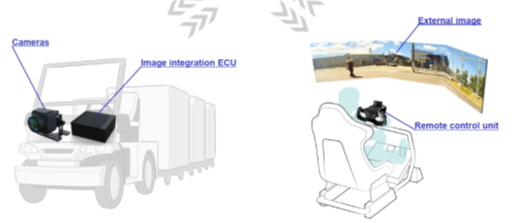 control mobility systems as a solution to social problems such as harsh work environments and resulting labor shortages in various fields. The benefits of employers are recruitment appeal, less labor cost and fewer labor accidents and benefits for workers are efficient use of in-between time, more career choices, and avoidance of harsh work environments.
control mobility systems as a solution to social problems such as harsh work environments and resulting labor shortages in various fields. The benefits of employers are recruitment appeal, less labor cost and fewer labor accidents and benefits for workers are efficient use of in-between time, more career choices, and avoidance of harsh work environments.
This all-in-one control unit incorporates switches, a display, and a sensor that have the same strengths as those installed in an actual car. The switches also have realistic operating feelings.
The image processing technology is used for the remote monitoring system of a self-driving bus (Tokai Rika offered the system in some demonstration experiments). In this in-cabin monitoring
system concept, when detecting any passenger’ unsafe behavior, the monitoring system informs the supervisor to prevent the passenger from falling. The system is also available for existing regular bus services.
Precise Parking at a Glance – Wireless Charging Support for EVs: In wireless EV charging, a driver must align the receiver coil with the transmitter coil by instinct because the receiver coil is inside the car and the transmitter one becomes invisible as the driver parks the car. Misaligned coils can cause problems such as retry parking and power loss.
The UWB high precision ranging function measures the distance and direction between the transmitter coil and the receiver coil to give parking instructions to the driver. On board, UWB devices for digital-key can serve as a low-cost charging support system. Multiple UWB units work together to measure distances accurately.
Next Generation In-wheel Motors Electric Current Sensor Module: This came out of a collaboration between e-Gle and Tokai Rika for the Creation of an innovative electromechanical in-wheel motor that integrates a motor, an inverter, and a cooling system. Current Sensor and Bus Bar Technology with current sensor and busbar technology.
For more information on these recommend you directly contact Tokai Rika – Click https://www.tokai-rika.co.jp/en/ to connect.


